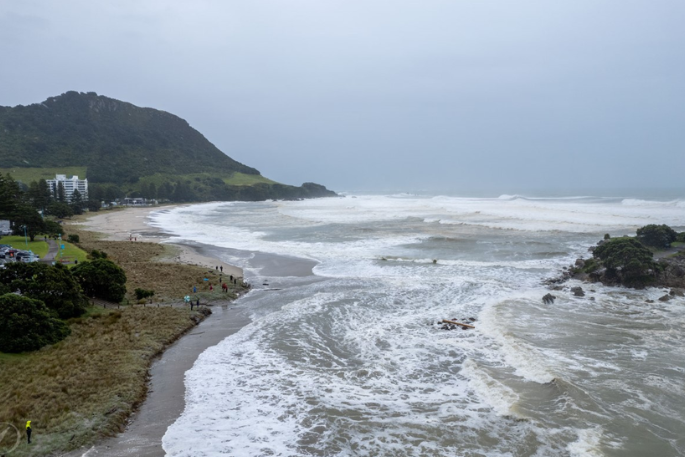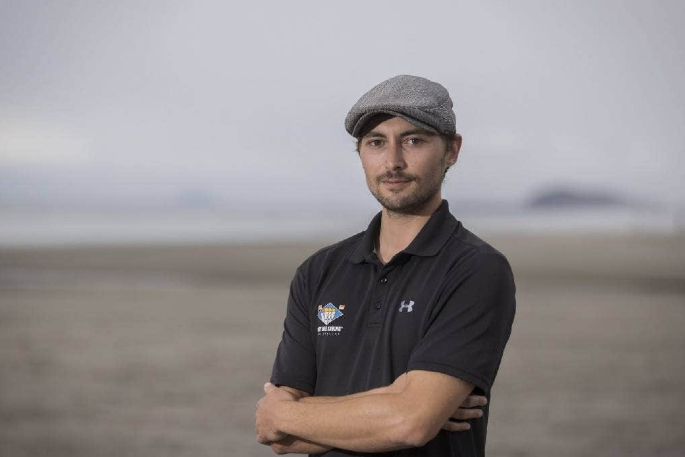Swimmers are asked to be aware that heavy rain, strong winds, surging waves, and flooding in some areas means there is a high risk of contaminated water, unstable cliffs and dangerous swimming conditions.
Toi Te Ora public health advise that people follow the '48 hour no swim” rule after heavy rain.
'It's best to avoid swimming in rivers, streams, lakes, harbour areas and at beaches for at least 48 hours after heavy rain,” says a Toi Te Ora spokesperson.
'There is likely to be contamination from rural and urban run-off in waterways after heavy rain. To avoid illnesses such as diarrhoea, vomiting, skin infections or ear infections, follow the rule of no swimming for at least 48 hours after heavy rain.”
After a storm there can be large logs and debris floating in the water.
'What we see on beaches is about half of what's out there,” says Surf Life Saving NZ Eastern region lifesaving manager Chaz Gibbons-Campbell.
'We'll see the water start to clear up over the next few days.”
Chaz says today [Wednesday] is looking good.
'We're hoping to put flags out. Keep an eye on the Safeswim website which gives up-to-date information on which beaches will have lifeguards on duty.”
Mount Maunganui, Omanu and Papamoa beaches
The Safeswim website shows that lifeguards are on duty today at Mount Maunganui Main Beach, Omanu Beach and Papamoa Beach from 10am – 5pm. Swimmers are advised that swimmers should only be swimming at these beaches this week in the patrolled areas.
There are no lifeguards at Tay Street, Papamoa East, Maketu or Pukehina and swimming there is not advised without lifeguards present. Pukehina Beach will be patrolled on Saturday between 10am – 4pm when lifeguards are on duty there.
Papamoa and Papamoa East
Council-funded lifeguards patrol at Taylors reserve, Papamoa East from mid-December through until Waitangi Weekend. The Papamoa coastline can be dangerous when the surf conditions are over a metre. Inshore holes and troughs create strong feeder currents which can catch swimmers off guard.
 Large swells were observed when Cyclone Gabrielle hit the region. Photo: Jamie Troughton/Describe Media.
Large swells were observed when Cyclone Gabrielle hit the region. Photo: Jamie Troughton/Describe Media.
Monitor conditions before entering the water, seek out sandbars watch out for rip currents. Swimmers are encouraged to swim at the patrolled locations marked by the red and yellow flags.
Eastern region wrap up
Chaz says the eastern region got off well during Cyclone Gabrielle.
'Our Eastern flood teams were down in Hawke's Bay helping rescue people off roofs,” says Chaz. 'And our Northern team was helping in Muriwai.”
He says he was stoked with people who listened to advice.
'There were some silly buggers. One guy went surfing off Cathedral Cove. Lifeguards didn't want to go out and bring him in without back-up as the conditions were too dangerous. Finally one of his surfer friends went home and got his jetski and went out and got him. He'd drifted by this time around to Cooks Beach.”
The next two days
'Toi Te Ora public health have put out a warning over swimming with sediments in the ocean,” says Chaz.
'The waves are looking good this morning, and it will be getting fine. We have lifeguards at Mount Maunganui, Omanu and Papamoa during the week. Volunteers will be back on over the weekend across Coromandel and down to Gisborne.”
Chaz says Tauranga City Council is restoring beach access at Omanu so lifeguards can get safely down onto the beach.
'Our Coromandel clubs are more hampered up there due to road slips and dangerous road conditions. So those clubs are going through their rosters to see who is around and available to go on patrol.”
Tauranga City Council fund lifeguards at Mount Maunganui, Omanu and Papamoa from 10am – 5pm, from Monday to Friday, which continues through to next week. After that volunteers will continue weekend controls up to Easter at Mount Maunganui.
Go to Safeswim.org.nz to see when and where lifeguard patrols are on duty.



0 comments
Leave a Comment
You must be logged in to make a comment.